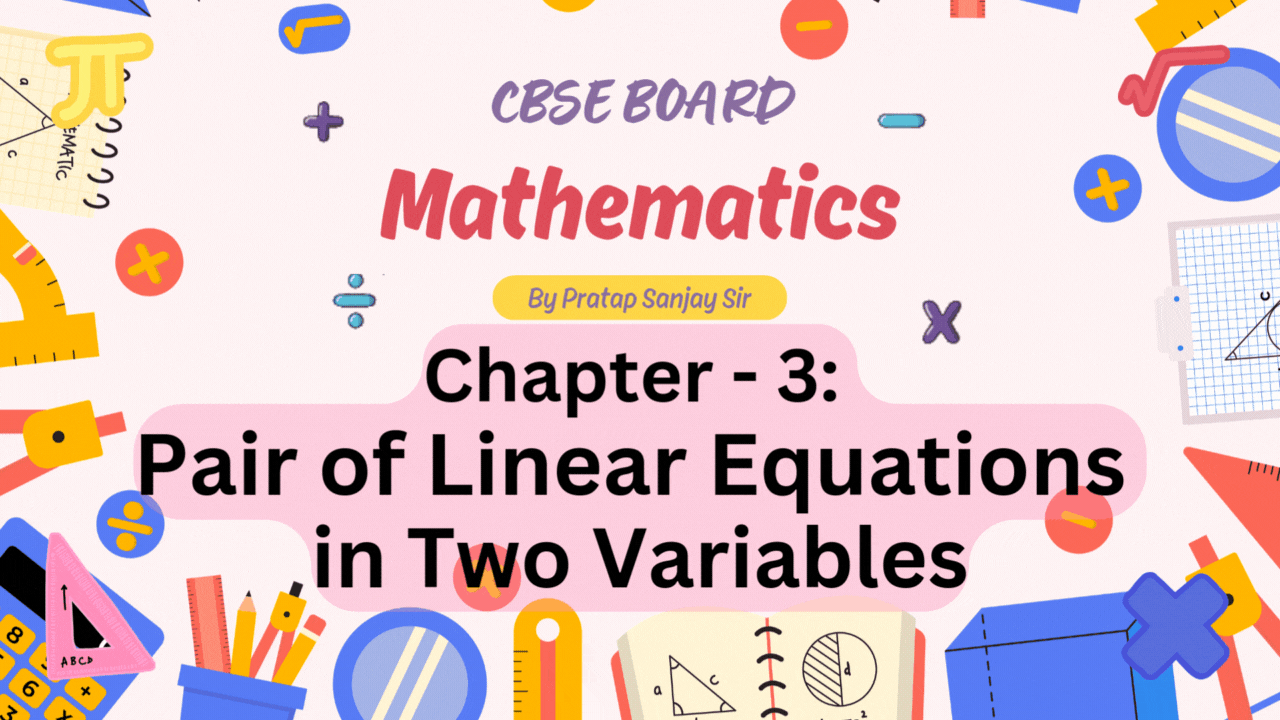Class 9th: Pair of Linear Equations in Two Variables
⇒ A linear equation in two variables is an equation of the form:
ax + by + c = 0, where a, b, and c are real numbers, and a and b are not zero.
General Form of Pair of Linear Equations
The general form of a pair of linear equations is:
Methods to Solve Linear Equations
There are two main methods to solve simultaneous linear equations in two variables:
- Graphical Method
- Algebraic Methods (Substitution, Elimination, and Cross-Multiplication)
1. Graphical Method
The steps to solve a pair of linear equations graphically are:
- Express one variable in terms of the other, for example: y = mx + c.
- Choose values for the independent variable (x) and calculate the corresponding values of the dependent variable (y).
- Plot these points on a graph and draw the lines.
- Check the intersection of the lines:
- Distinct point: Unique solution (consistent).
- Coincident lines: Infinitely many solutions.
- Parallel lines: No solution (inconsistent).
Possibilities of Solution & Inconsistency
2. Algebraic Methods
(i) Substitution Method
- Solve one equation for one variable in terms of the other.
- Substitute this expression into the second equation and solve for the remaining variable.
- Use the found value to calculate the other variable.
Example 1:
Solve the following system of linear equations using the substitution method:
2x + 3y = 13
4x - 2y = 2
(ii) Elimination Method
- Multiply both equations by suitable numbers to make the coefficients of one variable equal.
- Add or subtract the equations to eliminate one variable.
- Solve for the remaining variable and substitute back to find the other.
Example 2:
Solve the following system of linear equations using the elimination method:
3x - 4y = 5
2x + y = 3
(iii) Cross-Multiplication Method
Given the equations:
Example 3:
Solve the following linear equations using cross multiplication method.
3x - 4y = 2
y - 2x = 7












